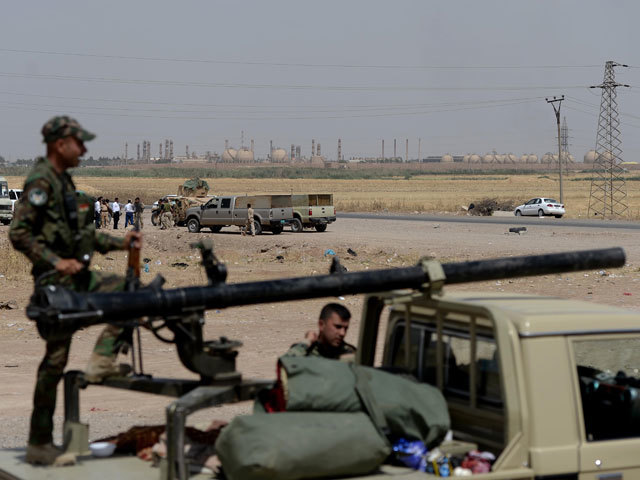
Forget the printing press. In readying for the rollout of Islamic State’s new money, goldsmiths and silver smelters have been toiling away.
The jihadist group on Saturday touted “the return of the gold dinar” in an hour-long video issued by its media wing, al Hayat. Islamic State’s policy-making Shura Council last year tasked its Beit al Mal, or treasury, with minting the coins, which come in several denominations made of gold, silver and copper.
The currency is meant to break the shackles of “the capitalist financial system of enslavement, underpinned by a piece of paper called the Federal Reserve dollar note,” the group said in the video. It didn’t explain where the coins were being minted, nor how they’ll be distributed or replace currencies circulating in the territory the group occupies in parts of Iraq and Syria.
Islamic State first announced its intention to issue its own money in November, five months after it seized the northern Iraqi city of Mosul and its leader Abu Bakr al-Baghdadi announced a caliphate. The move was seen by analysts as part of the group’s efforts to build the institutions of a functioning state.
The jihadists have amassed a war chest of millions of dollars, partly through collecting taxes, and by seizing oil refineries. Bank and jewelry store robberies, extortion, smuggling and kidnapping for ransom are other important sources of revenue for the group, which metes out brutal punishment to anyone who opposes its rule, including beheadings and crucifixions.
Morale Booster
Baghdad-based economist Basim Jameel said the announcement is an attempt to boost the morale of Islamic State fighters, who have suffered battlefield setbacks in recent months, including the loss of Tikrit in March.
Minting the coins is relatively easy, Jameel said, as goldsmiths in Mosul imported machines from Italy in recent years, each one able to produce about 5,000 coins a day. The metals probably come from banks the group seized, ransoms, the homes of Christians and other minorities who fled, he said.
In the video, Islamic State refers to Caliph Abd al Malik ibn Marwan, who introduced the first Arabic-script coinage of the Islamic empire, free of figural representation, in around 696 AD.
The group said its 21-carat 1-dinar coin weighs 4.25 grams, while the 21-carat five-dinar coin weighs double that. Three dominations of silver dirhams and two of copper coins were minted for smaller transactions, it said.
Exchange Rate?
Each coin bears an inscription that reads, “The Islamic State, a caliphate based on the doctrine of prophecy.” The 1- dinar coin also shows seven stalks of wheat, which the group said is meant to represent “the blessing of spending in the path of Allah.” The five-dinar coin bears the image of a map of the world.
Oil, the group said in the video, will now only be sold for gold.
The Pentagon said in February that illicit oil sales are no longer the main source of funding for the group. A U.S.-led bombing campaign that began last summer reduced the number of fields under its control and several neighbors, including Turkey and Kurdistan, have cracked down on smuggling routes.
Residents interviewed by phone from Mosul and Ramadi, the western Iraqi city captured by Islamic State in May, said so far they hadn’t seen any coins, received details of how the currency swap would work, or been told what the prevailing exchange rate might be. They said families have been preparing for this moment for some time.
One Mosul resident, who asked not to be identified, said his family and others will exchange a certain amount of old money into the new Islamic State currency to pay household expenses. Some will keep back a portion of the old currency to exchange into dollars in areas that remain under government control, he said.
Because Islamic State is classified as a terrorist group, the coins can’t be traded legally.
“They’ll only be used in these areas and people will only buy these coins for their daily needs and expenses,” said the economist Jameel.
“Nobody outside their control will accept the currency and I don’t know how they’ll keep up with demand, as they are losing resources day after day,” he said. “At the end of the day, this is a media propaganda tool.”